Try Rebuy For FREE
See for yourself why 10,000+ fast-growing brands use Rebuy to save time, streamline their tech stack, and accelerate sales growth.
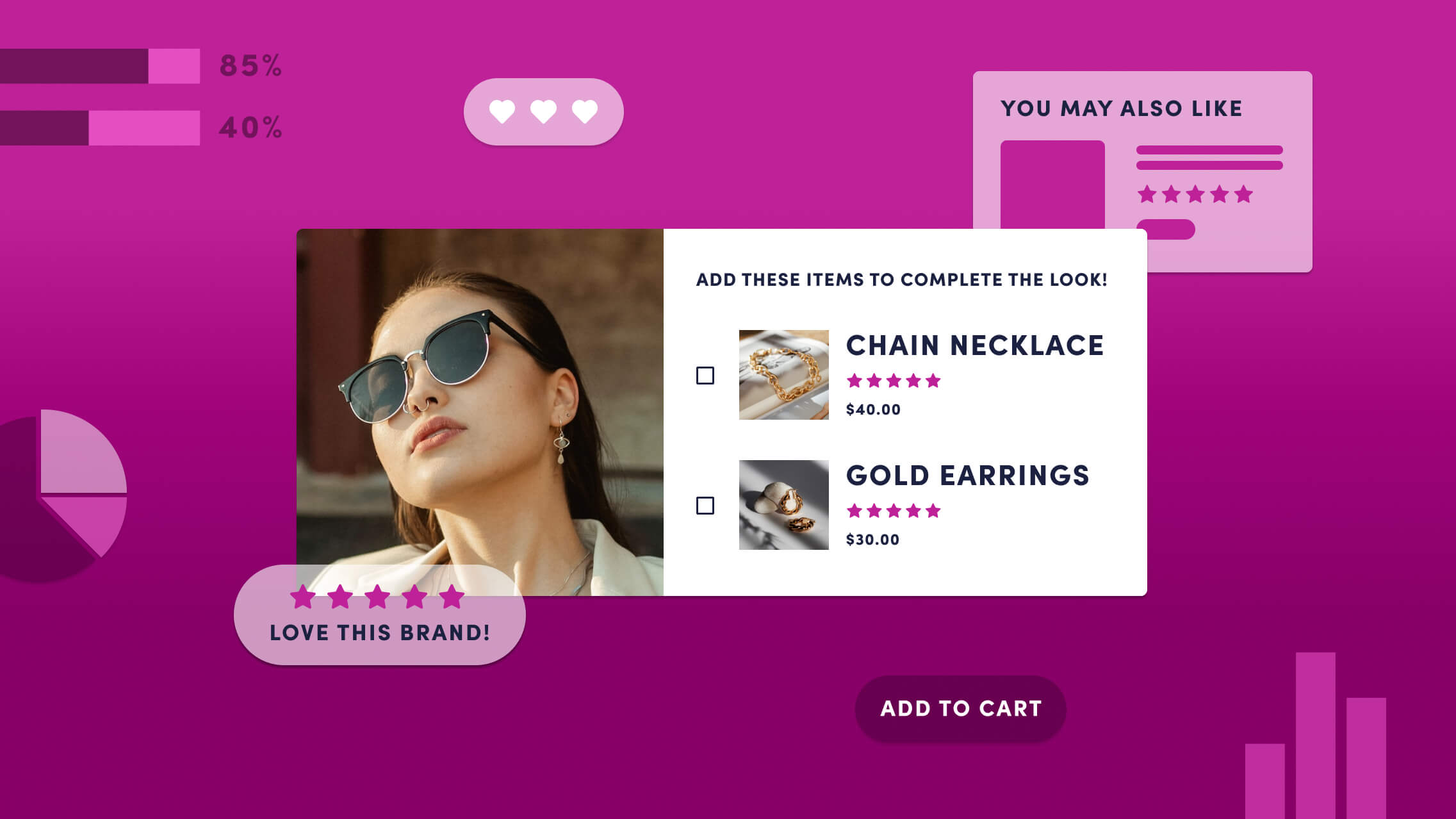
A comprehensive guide to everything from product recommendations to post-purchase experiences. Your ecommerce personalization journey starts here.
What Is Ecommerce Personalization?
How To Use Personalized Product Recommendations
Maximize Sales and Enhance Customer Experience With Better Merchandising
Add Personalization To Upsells and Cross-Sells
Personalize Your Shopping Cart To Engage Customers
Improve Checkout Personalization To Increase Conversions
Stand Out From the Competition With a Personalized Post-purchase Experience
Boost Ecommerce Sales With a Personalized Shopping Experience
Ecommerce personalization is the key to increasing sales and customer retention 🔑
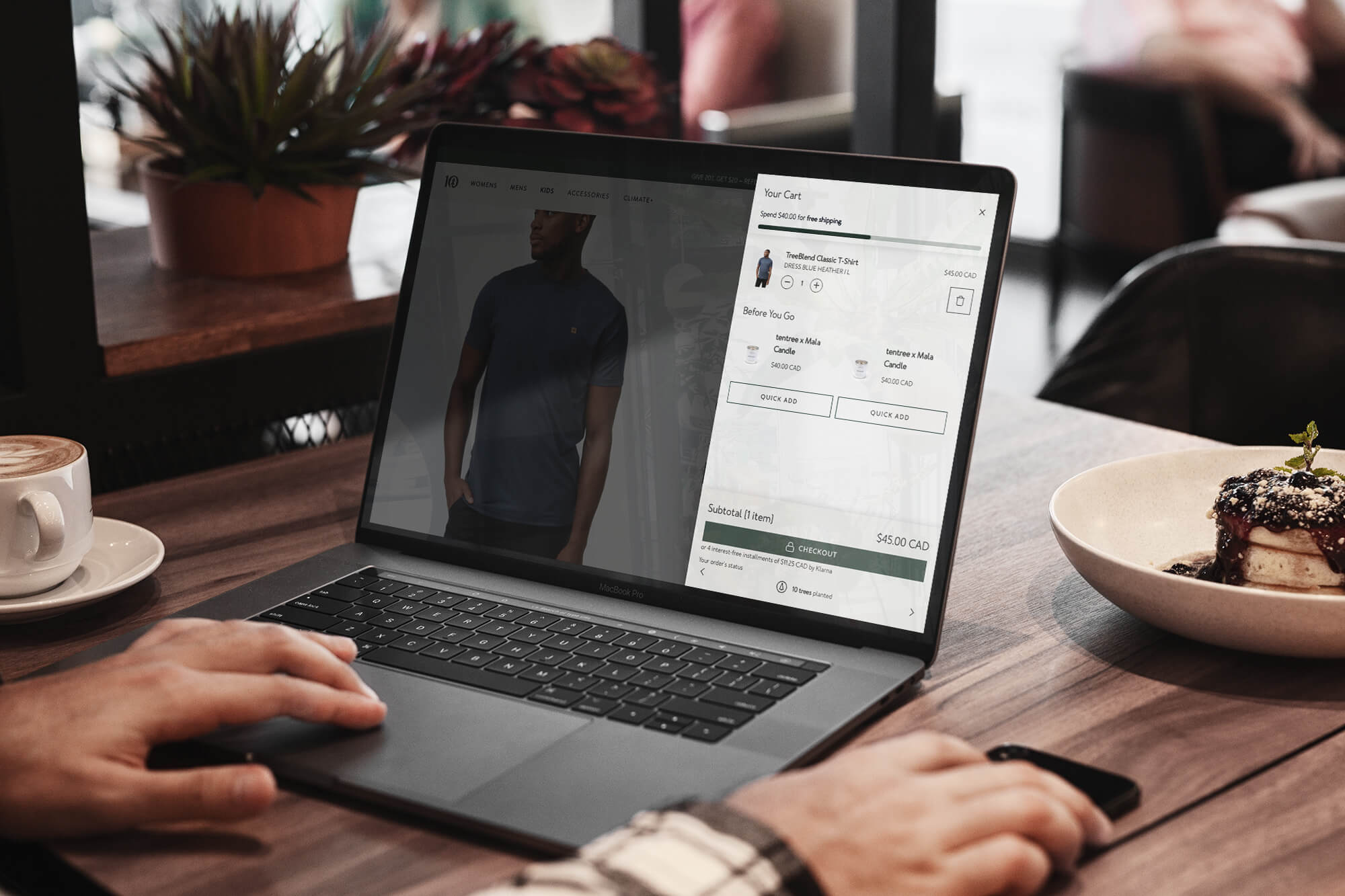
Savvy individuals with the tools and knowledge to implement personalized strategies will see the rewards.
We're talking to you, founders, merchants, and marketers!
This comprehensive guide to ecommerce personalization covers everything you need to know to create intelligent shopping experiences. We start out with personalized product recommendations before moving on to merchandising, shopping carts, upsells and cross-sells, checkout, and post-purchase experiences.
We're feeling so inspired that we wrote this poem about it:
In the realm of ecommerce, a path to explore,
Personalization unlocks the door,
With tailored experiences your customers adore,
Who said you can't have it all...and more?
Now, we can only show you the door. You have to step through it. So, with the pomp and circumstance behind you, let your journey through the world of ecommerce personalization begin!

Ecommerce personalization (commonly used interchangeably with 'commerce personalization') is the practice of tailoring online shopping experiences to individual customers by delivering relevant content, product recommendations, and offers based on customer preferences, behavior, and demographics. This approach enhances customer satisfaction, engagement, and conversion rates.
In the world of ecommerce, personalization plays a pivotal role in defining the scope of online shopping experiences, ensuring that every interaction is uniquely tailored to each customer's needs and preferences. In this guide, you'll learn how to use ecommerce personalization to positively influence customer satisfaction, revenue, and average order value (AOV).
The key to increasing sales and customer retention is this: make your customers feel like you know exactly what they want. Personalization in ecommerce is about presenting the right product to the right person at the right time.
To truly understand the impact of personalization, consider ecommerce personalization examples where businesses have successfully implemented strategies to offer a customized shopping experience.
These examples highlight the importance of a comprehensive ecommerce personalization strategy, which integrates personalized marketing into the ecommerce framework, leverages technology and tools for creating personalized experiences, and uses AI and audience segmentation to enhance customer engagement across various touchpoints.
To implement personalized product recommendations, you need a winning product recommendation strategy. But building one isn’t difficult. Start by defining your goals, mapping out customer journeys, and gathering first-party user data. Common strategies include showcasing bestsellers, promoting new arrivals, and A/B testing.
The best tactics for converting with personalized recommendations include collaborative filtering, A/B testing, and email marketing. Learn new upselling and cross-selling techniques to drive sales and create a better customer experience.
Amazon became the leader in ecommerce by pushing ecommerce personalization to new levels. Starting with the “Customers Who Bought” widget in 2010, Amazon has introduced dozens of personalization features powered by AI, machine learning, big data, predictive analytics, and more. Using personalized product recommendations, other retailers have increased conversion rates and customer loyalty rates, resulting in higher revenue.
Similarly, Netflix has revolutionized the customer experience through its powerful personalization engine. Did you know 80% of what you watch on Netflix comes from personalized recommendations? The company's success is attributed to its data-driven approach and advanced algorithms. Netflix uses machine learning and predictive analytics to create "taste communities" and provide hyper-personalized recommendations to its 195 million+ members worldwide.
Too many choices can cause choice overload, leading to decreased conversions and abandoned carts. The good news? Product recommenders, or recommendation engines, can reduce choice overload with relevant suggestions to customers based on data points like previous purchases and browsing history.
Inspire brand loyalty, reduce cart abandonment, and increase AOV in time for BFCM (Black Friday and Cyber Monday). Three popular ways to boost BFCM sales:
What more BFCM tips? Check out these five tips to amp up your BFCM sales with product bundles.
🎁 See how merchants using Rebuy performed during BFCM 2023.
OLLY Energizes Their Subscription Program, Boosts AOV 25%
OLLY is a great example of what to do when your personalized recommendation strategy isn’t working: Go back to the drawing board with what you learned. In their case, the issue was the subscription program and the large amount of development work their current tech stack required. They rethought their tech and approach to great results.
Malomo is a shipment tracking platform that helps ecommerce brands turn order tracking into a profitable marketing channel using branded tracking pages and shipment email workflows. By using shipment tracking, brands can drive repeat sales, increase customer satisfaction, educate customers, and lower the number of support tickets. Malomo’s case studies show impressive metrics that outperform industry standards, thanks to personalization.
.png)
When you understand how to merchandise effectively, it gets way easier (and way more fun) to increase customer loyalty, boost average order value, and ultimately drive more revenue.
As ecommerce personalization has grown, increased competition, customer privacy concerns, and higher acquisition have become large challenges in merchandising.
Use first-party data to overcome ecommerce merchandising strategy challenges by connecting with customers through SMS marketing, harnessing the power of subscriptions, and using product recommendations to personalize the shopping experience. You’ll boost conversions, increase average order value, and ultimately succeed in a highly competitive market.
Connecting with your customers means delighting them at every step of the purchasing process. For more effective ecommerce sales promotions, offer some extras for your customers:
But keep in mind there are three common pitfalls to avoid when attempting to increase AOV with sales promotions:
Smart merchandising is a technique that uses data and technology to analyze customer behavior, preferences, and trends to inform merchandising decisions. Smart merchandising increases customer loyalty, forecasts demand, and optimizes pricing with smart merchandising tools.
To get started with smart merchandising, invest in your inventory management approach, employ predictive analytics, and personalize your promotions. When you’re ready to take things to the next level, enhance the appeal of your products with visual merchandising.
Nat’v Trims Their App Stack, Increases AOV by 8.3%
Sometimes the solution is simply to do less and do it well. That’s what Nat’v discovered when they improved the UX, trimmed down the number of apps, and used personalized merchandising to increase their AOV. Customers were having trouble finding what they wanted, but a revamped ecommerce personalization approach helped them get the right product in front of the right audience.
Ritual Zero Proof Boosts AOV by 46.3%
Ritual Zero Proof is a maker of premium non-alcoholic spirit alternatives with the taste, smell, & kick of liquor. After a single-function bundling app didn’t meet functional or aesthetic expectations, the spirits brand went all in on in-cart subscription upsells. They followed that up by pairing powerful Rebuy Smart Links with a tried-and-true merchandising strategy: bundles. They sold the lights out, boosting subscription revenue by 66.7% and AOV by 46.3%.
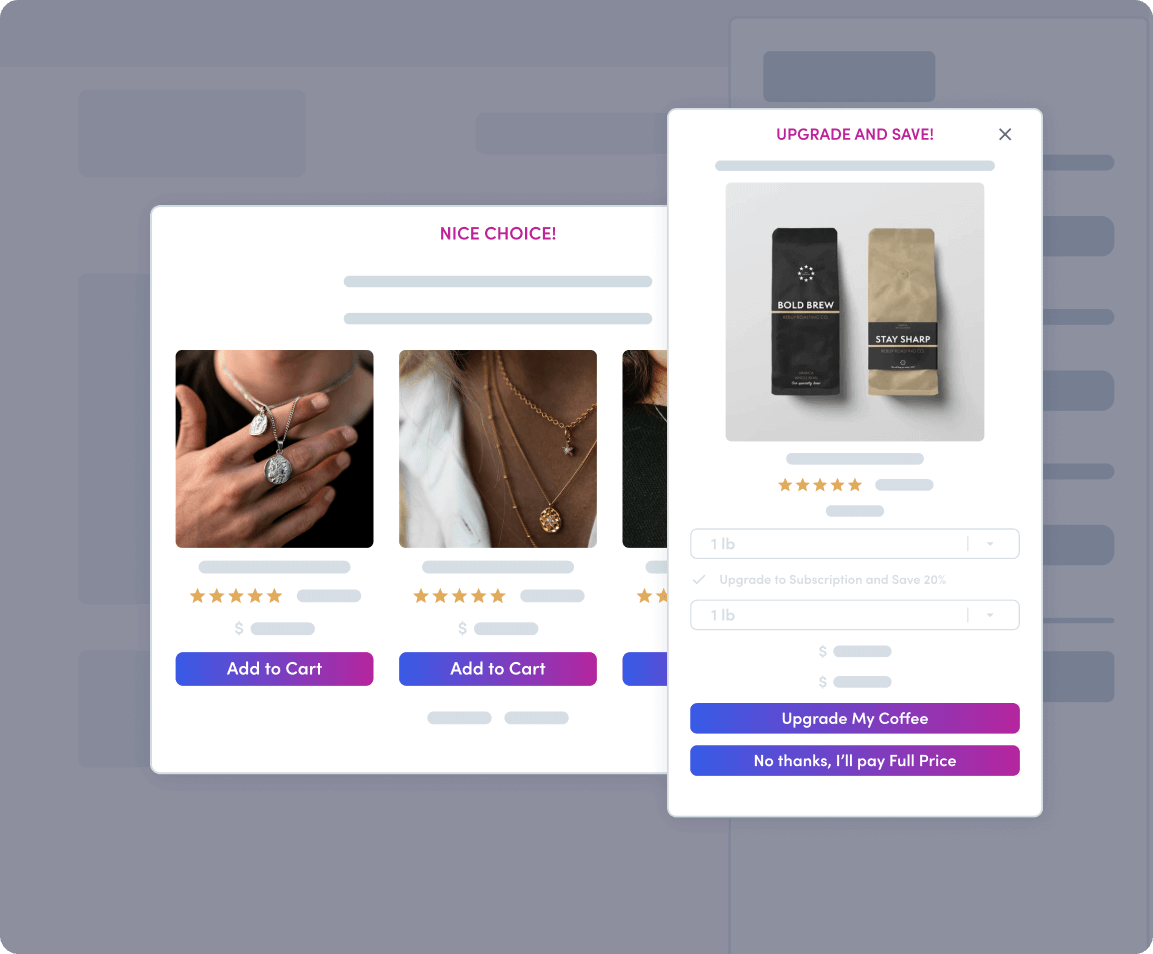
Upselling and cross-selling are essential techniques that can help merchants offer a better online shopping experience. Upselling asks customers to buy a more premium product, while cross-selling encourages customers to spend more by buying related products.
Implementing these strategies with a focus on personalization not only boosts sales but also helps retain customers by providing them with relevant offers that meet their needs and preferences.
To implement upsells and cross-sells effectively, it’s important to add product recommendations at key points in the customer journey, like the product detail page, shopping cart, and post purchase. It’s important to keep in mind that upselling and cross-selling work best when product recommendations are driven by data, highly relevant and tailored to the customer.
The subscription model is popular, and Recharge makes it easy for merchants to manage and scale their own subscription business. Using customer data to power your ecommerce personalization will increase subscriptions, improve win-back strategies, and offer more value to subscribers.
Achieve maximum ROI from your subscription model by:
Benefits include predictable revenue, loyal customers, and a boost to customer lifetime value.
Get the scoop on boosting your average order value with six promotions that can’t lose. AOV is a big deal in ecommerce and one of the first things smart business owners keep an eye on. Common mistakes to steer clear of when running ecommerce sales promotions include getting deals mixed up with promotions and running promotions without a clear strategy behind them.
Revant Optics and Rebuy partnered up to find a way to offer hyper-targeted cross-sells that meet Revant's stringent compatibility requirements. The retailer for sunglasses and prescription lenses found a solution in regular expressions (RegEx), which allowed them to simplify the process of recommending compatible cross-sells that obeyed all compatibility constraints for each of Revant’s 80,000+ SKUs. Revant saw an 8.5% increase in units sold after supercharging its product tagging system.
Not all shopping carts are created equal. In fact, some drive customers away. The best carts are works of art that are helpful, intuitive, and engaging.
Achieving a personalized ecommerce experience is a key goal of cart personalization, tailoring the online shopping journey to the individual preferences and behaviors of each customer.
By focusing on personalized experiences, cart personalization enhances the broader shopping journey, making consumers feel valued through unique and tailored interactions.
Additionally, by offering relevant content, personalized carts can provide more targeted product recommendations and information, ensuring that customers are presented with products and offers that align with their interests and shopping behavior.
Shopping carts have evolved from the early days of Web1 to the current Web3 technologies powered by machine learning and AI. Delve into the limitations of Web1 cart pages (static and lacking user engagement) and the fast, simple, and personalized checkout experience that today’s shoppers demand. By upgrading to a modern cart, ecommerce retailers can provide shoppers with a seamless shopping experience and increase conversion rates.
Cart abandonment is a major issue that costs ecommerce stores billions of dollars in lost revenue each year. But you can improve customer satisfaction, gain insights from cart abandonment, and streamline the checkout process if you know how to use customer data to improve your shopping cart. For example, you can add a clear call to action, multiple payment options, mobile optimization, and complementary product offers.
A cart flyout extends from the right side of the screen and allows shoppers to edit their carts without leaving the page. Cart flyouts are fast, accessible, and immediately reflect any changes made by the shoppers. But a poorly designed cart flyout can lead to cart abandonment, decreasing overall customer satisfaction. Use these ten great shopping cart examples to inspire you to design a shopping cart flyout your customers love. Some quick tips:
Magic Spoon Casts a Spell With Smart Cart, Boosts AOV 14.75%
Magic Spoon, a guilt-free breakfast cereal company, wanted to give their customers a chance to try new flavors and promote subscriptions at the same time. They turned to Rebuy’s Smart Cart, which allowed them to customize the shopping experience and add AI-powered personalization to their checkout. The revitalized cart led to a 14.75% increase in AOV, more than 18,000 products switched to subscription, and 12.86% of total sales attributed to Rebuy.
Manssion Finds the Perfect Fit, Boosts AOV by 18.65%
Manssion, a premium men’s jewelry designer, offset rising customer acquisition costs and increased their return on investment by using AI-driven recommendation widgets. By employing bundles, pop-ups, and product discovery methods, they increased their average order value (AOV) by 18.65%, with 15.66% of total sales attributed to Rebuy and nearly one in five orders containing a Rebuy add-on. The AI-driven widgets also offered personalized shopping experiences to their customers, increasing profits and customer satisfaction.
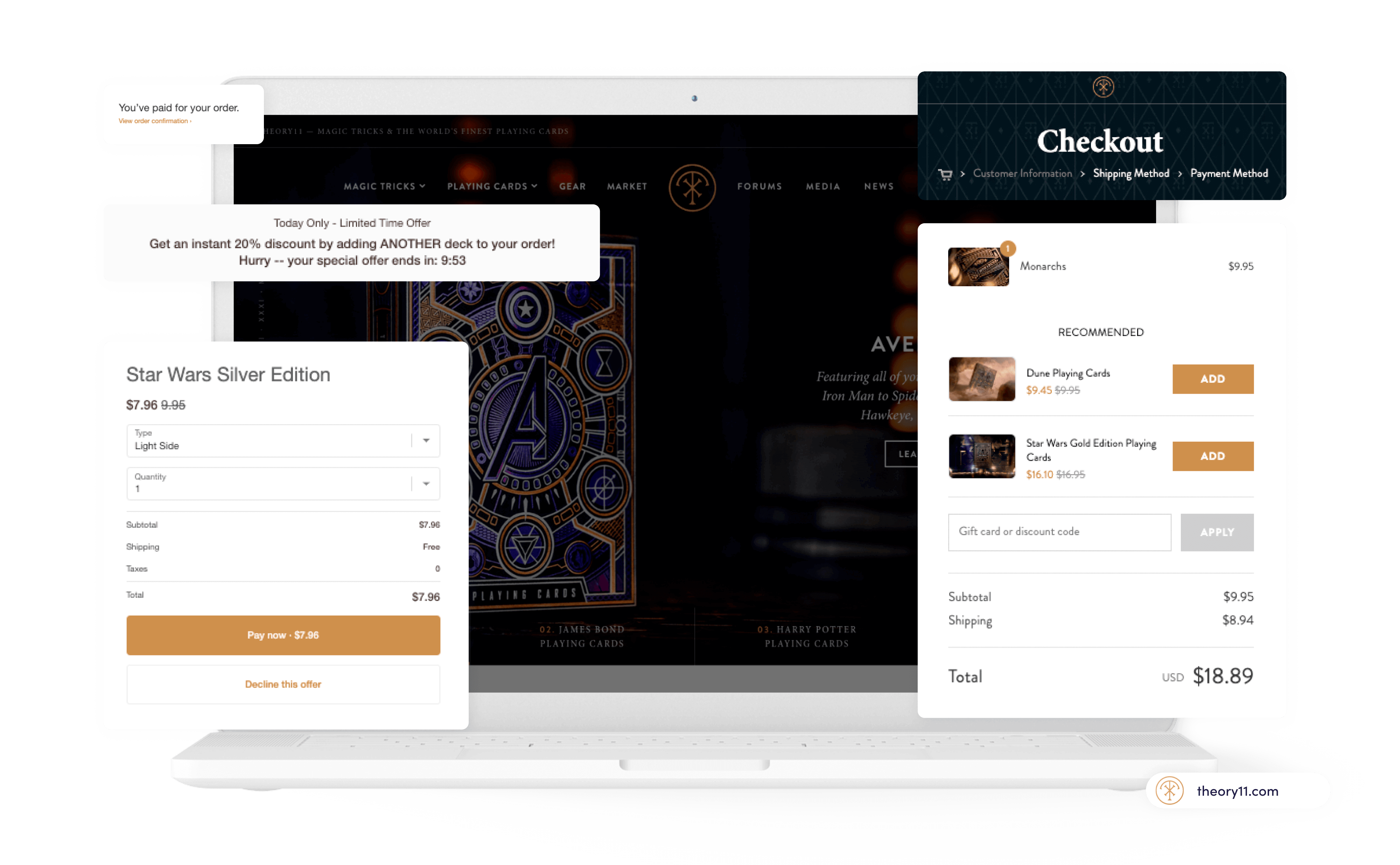
Improving checkout personalization is essential for increasing conversion rates and making customers feel valued.
By providing a smooth and intuitive checkout experience, businesses can keep customers engaged and increase the likelihood of repeat purchases. Read up on ways to optimize your checkout process with checkout extensions.
The goal of conversion rate optimization (CRO) is to increase the percentage of people who visit your online store and make a purchase. This can be achieved by fine-tuning web pages through techniques such as:
Rebuy helps improve your conversion rate by providing smart product recommendations, seamless upsells and cross-sells, and personalized customer experiences.
Checkout Extensions empower Shopify Plus stores to provide timely, intelligent product recommendations on the checkout page that boost your AOV and remove friction to make checking out easier.
Licorice.com Sees AOV Soar 17% Overnight
Licorice.com is a provider of artisanal gourmet licorice from around the world. The family of entrepreneurs behind the fun brand wanted to boost conversion rates and AOV with personalized product recommendations. They were able to optimize their site for revenue with an AI-powered shopping cart, compelling cross-sell displays on ever PDP (product detail page), and a personalized checkout page. The result was quite tasty. AOV increased by over 17% and the founders saved over 100 hours of dev work. Sweet!
And here's an even closer look at Licorice.com's checkout page personalization.
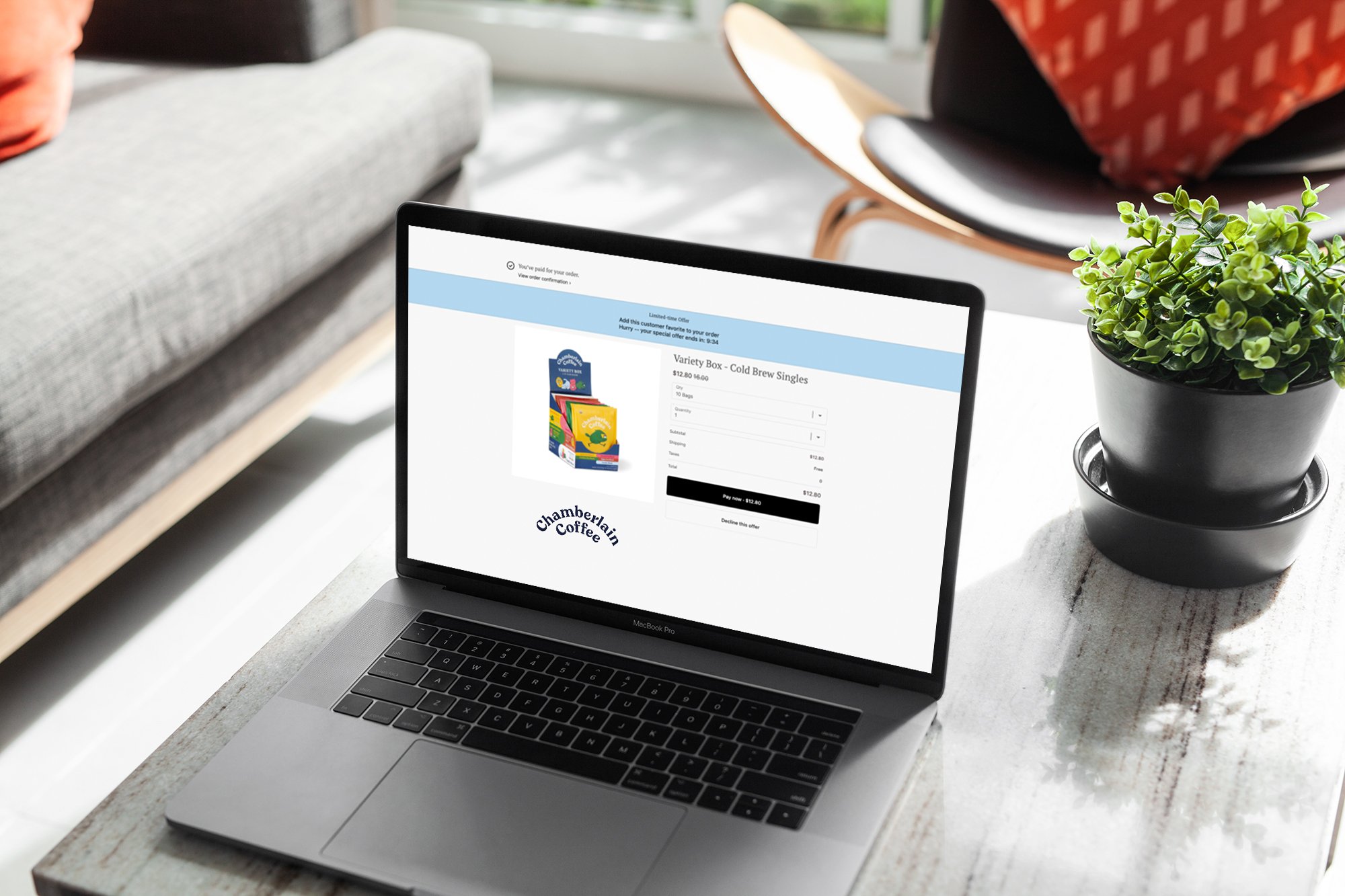
In the post-purchase stage, online brands have their customers’ full attention.
Yet too many of them overlook the possibilities for post-purchase connection with customers. Your post-purchase experience can make or break your customers’ loyalty. Providing an amazing post-purchase experience helps you stand out from competitors and increases the chance of repeat business.
If you’re looking to boost your post-purchase experience, you need a well-engineered post-purchase engine. It will reduce costs and strengthen your brand image.
To do that, you need a clear returns policy and targeted upsells and cross-sells to move slow-moving products out of inventory.
Common pain points associated with post-purchase offers include duplicate orders (instead of a simple add-on to the original purchase) and difficulty running A/B tests that include the post-purchase offers. If you’re facing these challenges, consider one-click post-purchase offers.
You can personalize your customers’ post-purchase experience for increased revenue, reduced expenses, and higher customer engagement. Take it further and optimize the post-purchase experience with A/B testing and multiple upsell and downsell flows.
Providing personalized shopping experiences for your customers is a great way to boost your ecommerce sales and help your customers discover new products they love.
Rebuy is a user-friendly and intuitive platform with AI-backed product recommendations. No coding required.
Customize product recommendations and create personalized shopping experiences that delight your customers with tailored recommendations.
•••
Interested in partnering with Rebuy? Let's do it.
To keep up with the latest trends, platform updates, and more, follow us on LinkedIn.
Unlock revenue potential with our Ecommerce Website Audit Guide. Learn why an audit is important plus benefits and checklists to optimize your shop.
Prepare for BFCM sales with frictionless commerce! Optimize your Shopify Plus checkout now for a smooth shopping experience and holiday profits.
Explore the world of customer retention. Learn practical tactics to improve customer retention, re-engage customers, and measure your efforts.
Stay up to date with all things Rebuy by signing up for our newsletter.
